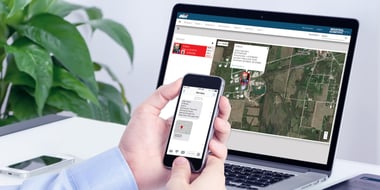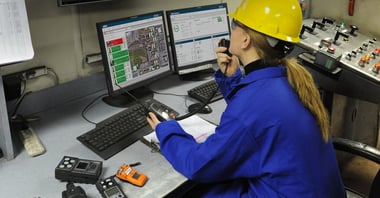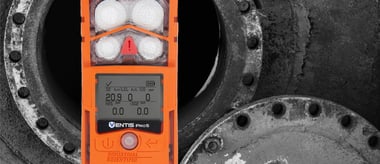As we settle into the new year, most of us are reflecting on what goals we’d like to achieve. For safety managers and other emergency personnel, professional goals might focus on more efficient safety device management, faster response times in the case of an incident, or protecting workers from avoidable, hazardous situations.
One easy way to accomplish your goals in 2023 is to create a reliable gas detection, maintenance, and safety program connected to the Industrial Internet of Things (IIoT). An IIoT-backed gas detection program with connected monitors and cloud-based software provides real-time site analytics and worker status updates–all so you can reduce risks, make smarter decisions, and react quickly if there’s an emergency to better protect your people and facility.
While creating an IIoT-connected gas detection program will help you improve various aspects of your safety program., it’s important to consider the entire picture of your facility. Think about the day-to-day operations, communications between your personnel and safety operators, visibility into your site, and more. Plus, don’t forget what type of impact your gas detection program should have on your yearly goals.
Here are three ways you can meet your goals to create a safer work environment for your team.
1. Improve Communication and Site Hazard Visibility
Whether your organization currently has a minimalist approach to its safety operations or a mature model already in place, having clear visibility into site hazards is key if you want to know not only where a hazard occurred, but also who was affected.
By implementing an IIoT-enabled gas detection program, you can easily share alarms and gas readings between workers and safety managers in real time, making it easier to respond to gas hazards, panic alarms, or man-down alarms quickly. Depending on how robust your safety program is, safety managers can even receive this information directly to their own gas detector or use remote live monitoring options to see readings instantly on a phone or laptop.
2. Gain Insights Through Data
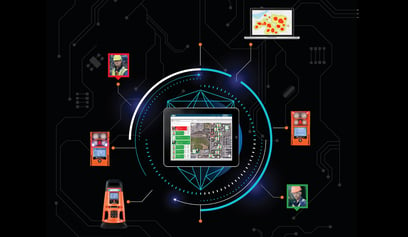 With an IIoT-connected gas detection program, you and your safety managers can also see where personnel are consistently facing hazardous exposure levels so you can drive proactive safety improvements to prevent accidents or injuries. If your team is equipped with Ventis® Pro5 Multi-Gas Monitors in an area prone to volatile organic compounds (VOCs), for example, live monitoring software like iNet® Now will mark the location of exposure by connecting to pre-placed beacons in your facility. This information is then sent to the cloud in real time to indicate any hazards to safety managers.
With an IIoT-connected gas detection program, you and your safety managers can also see where personnel are consistently facing hazardous exposure levels so you can drive proactive safety improvements to prevent accidents or injuries. If your team is equipped with Ventis® Pro5 Multi-Gas Monitors in an area prone to volatile organic compounds (VOCs), for example, live monitoring software like iNet® Now will mark the location of exposure by connecting to pre-placed beacons in your facility. This information is then sent to the cloud in real time to indicate any hazards to safety managers.
You can take this a step further with gas monitoring devices that feature connectivity options including peer-to-peer, satellite, wi-fi, and cellular.
These options can help you create a more robust safety program by enabling team members to look deeper into what’s happening around their site with alarm reports highlighting who had which gas monitor, if they were exposed to any hazards, where the exposure came from, and more. This can help to further increase situational awareness and decrease emergency response times by ensuring your gas monitors always have a reliable connection.
While deep insights are important for your safety program, the ability to access real-time data, such as gas readings or emergency alerts, from anywhere, is key in ensuring you aren’t leaving workers stranded without help.
3. Maintain Your Fleet to Improve Operations
When looking further into your day-to-day operations, deciding on the right IIoT-backed gas monitoring solution can be a difficult task. In addition to considering on-site hazards, connectivity options, and monitoring options, you need to keep a few questions in mind regarding your personnel and equipment. For example, who exactly is using your gas detectors—employees or general contractors? Or does your team ever lose gas monitors? Knowing these answers can help you determine what type of equipment you need, as well as how much.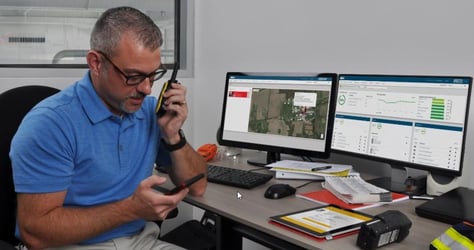 Using gas detection management software like iNet® Control can make it easier for you to track and manage your equipment. This software provides clear visibility into your processes so you can better manage your hazards, people, and equipment from one dashboard. With a solution in place, you can see everything you need across your entire facility, including who is assigned to each gas monitor so you can find out what happened if it isn’t returned at the end of a shift for any reason.
Using gas detection management software like iNet® Control can make it easier for you to track and manage your equipment. This software provides clear visibility into your processes so you can better manage your hazards, people, and equipment from one dashboard. With a solution in place, you can see everything you need across your entire facility, including who is assigned to each gas monitor so you can find out what happened if it isn’t returned at the end of a shift for any reason.
With these capabilities you can cut down on lost monitors and make sure your equipment is always ready to use, saving you time and most importantly, making it easier to protect your workers with the gas monitors and safety equipment they need every single day.
On top of tracking your equipment, repairs and regular maintenance can quickly become overwhelming when your budget gets tight or other tasks take priority. A subscription service like iNet® Exchange eliminates gas detector maintenance and repair by automatically replacing your gas detectors before you even know there's a problem. By letting the experts handle it, you can depend on your gas detectors to work in vital moments, and you may be able to downsize your fleet by eliminating the need for spare equipment.
Successfully Tackle Your 2023 Resolutions
By using a combination of IIoT-enabled devices and live monitoring solutions, you can streamline operations, ensure device readiness, enhance visibility into worker safety and site conditions, respond faster during emergencies, and more. With connected gas monitors, you can easily adopt elements that make sense for your business today and grow into more advanced capabilities as you see fit.
Overall, keeping teams connected through IIoT-enabled gas monitors and robust cloud-based software can create a reliable safety program to successfully tackle your 2023 resolutions. Whether you’re responding quicker to gas hazards with real-time visibility and alerts, identifying high-risk areas, or simply knowing which monitors are being used, gas detection programs backed by IIoT networks and applications are the key to staying connected and safe, no matter where workers are.
To get started on your New Year’s Resolutions for your team’s safety program, download our gas detection program maturity self-assessment.
